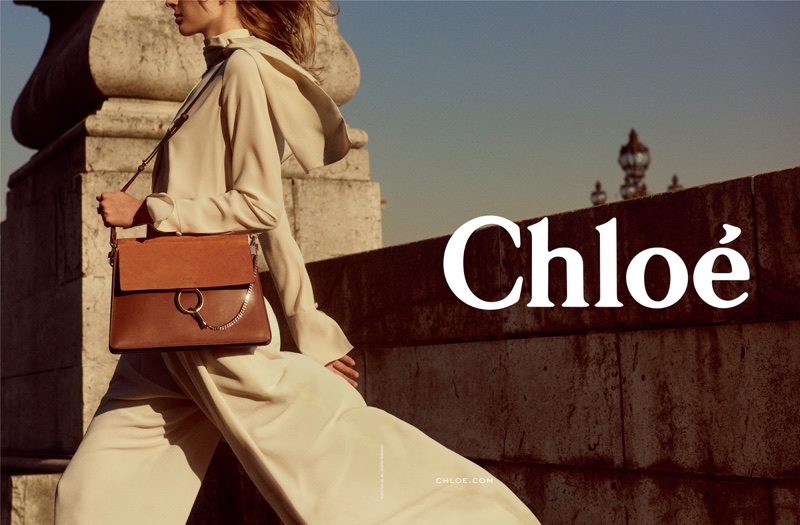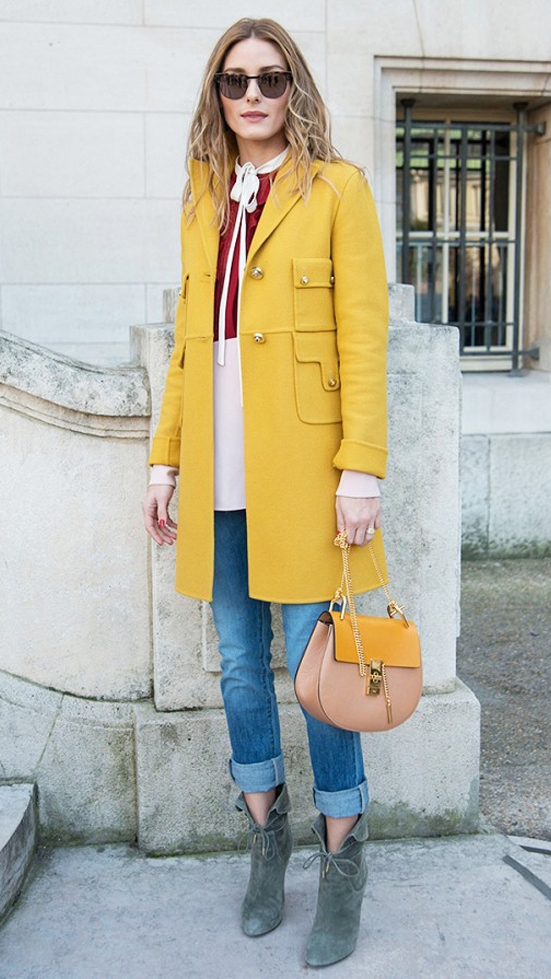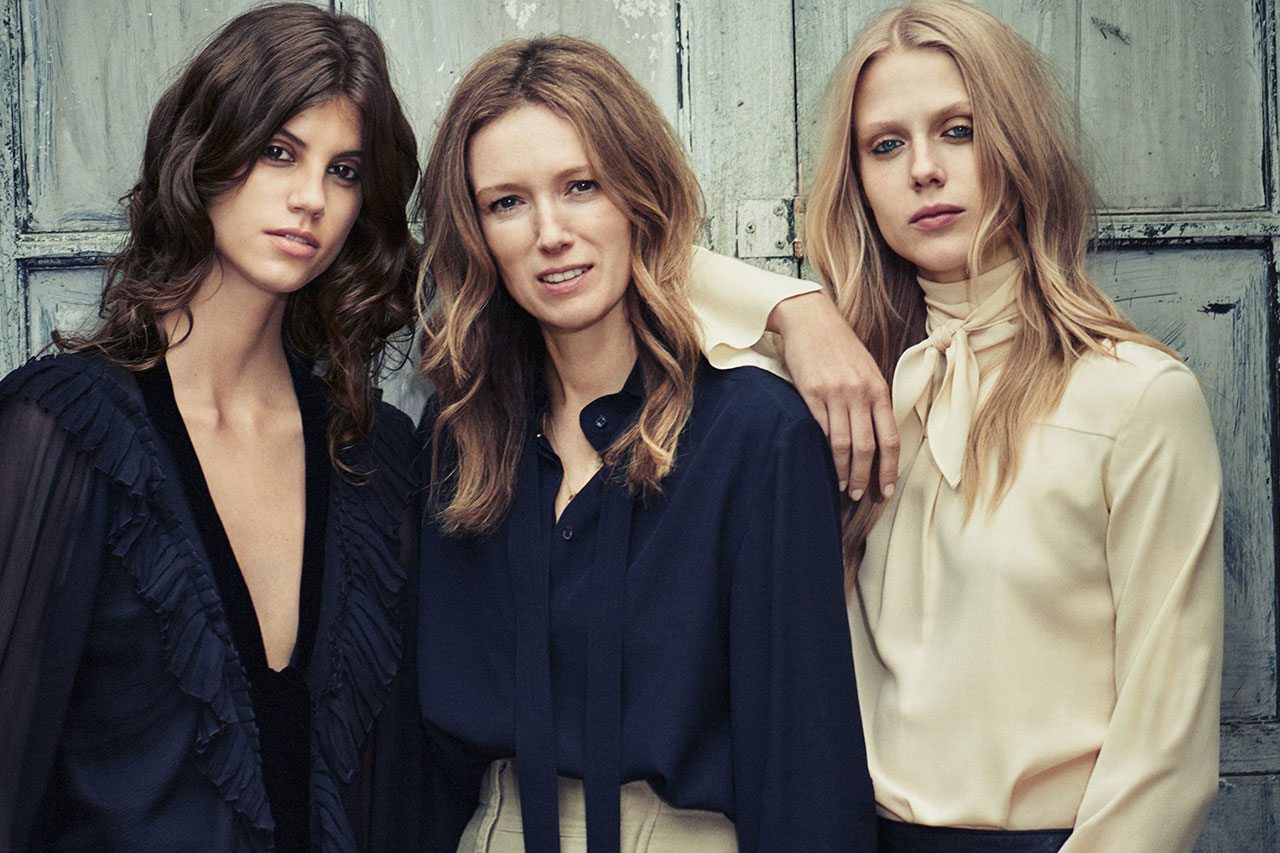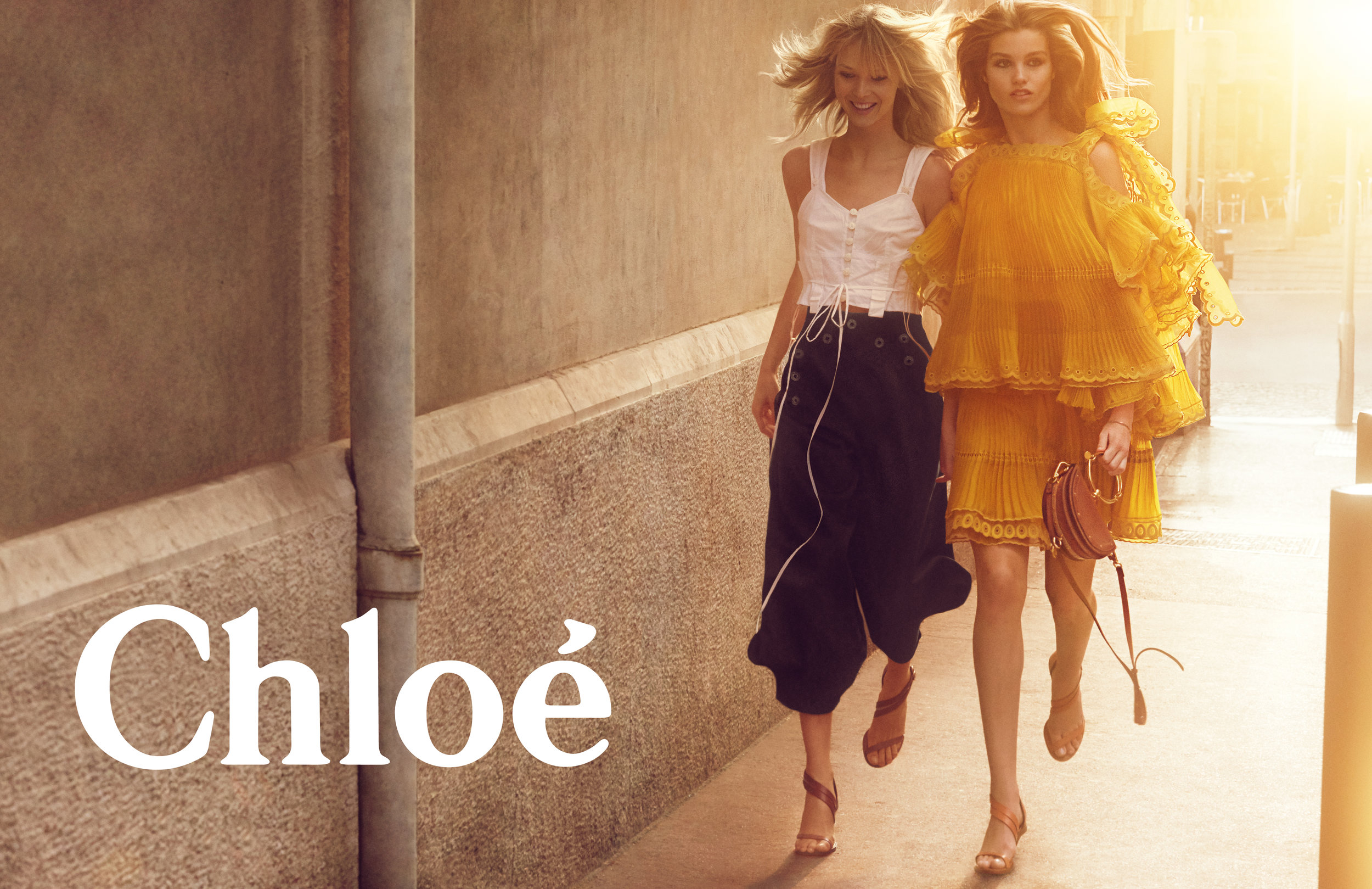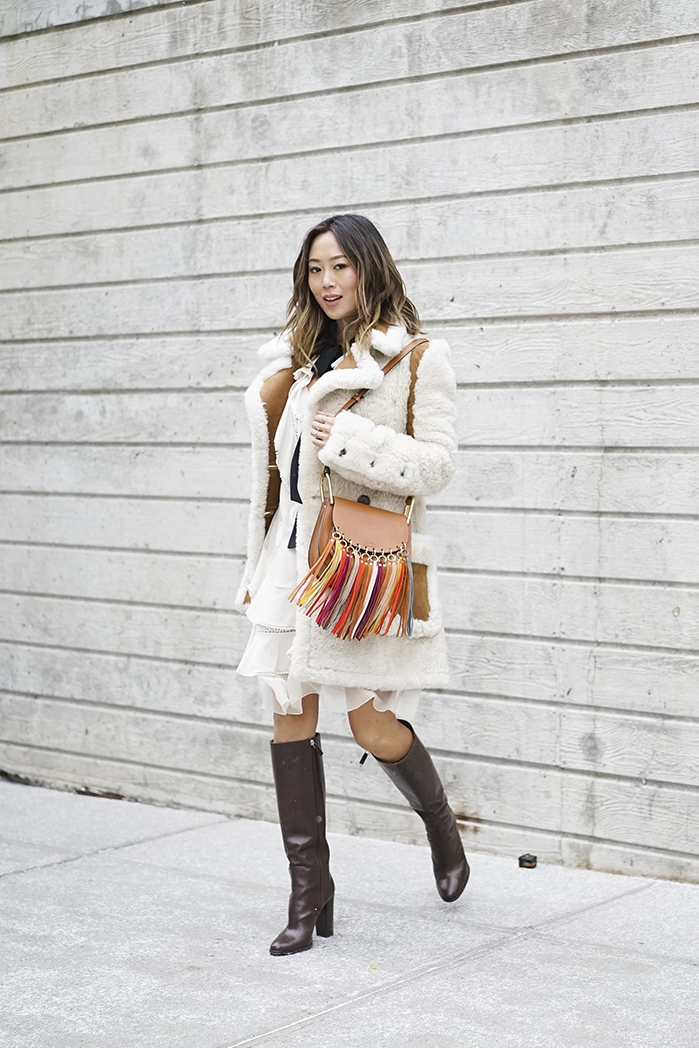The history and renewed vision of the Chloe Maison
Having been born in the throws of the bohemian wonderland of Paris in the 1950's, Chloé as a brand today is an aesthetic channel to the core essence of the feeling of nostalgia. While rubbing shoulders with the likes of Picasso on the cafes of Paris' Left Bank, Gaby Aghion, an Egyptian born Parisienne, founded Chloé in 1952, naming it after her close friend, Chloé Huysmans. She broke the mold of the haute couture premises of structured formality and tediousness by creating high-end fashion that was available to women straight off boutique racks. In doing so, she created a new standard for the way luxury fashion was to be consumed. Aghion has been said to have coined the term, prêt-à-porter, and revolutionizing the luxury fashion market's mobility, in terms of ready-to-wear production, into what we know it as today. With past (and now renowned) designers such as Karl Lagerfeld (1966) and Stella McCartney (1997), the Chloé brand grew to be loved by style icons over generations including Brigitte Bardot, Jackie Kennedy, Grace Kelly and onto the modern It Girls like Lou Dillion, Olivia Palermo and Alessadra Ambrosio. The spearheading ambition and creativity of Aghion is still an essential underpinning of what the brand represents today in the collective fashion world.
Olivia Palermo
Lou Dillion
Alessandra Ambrosio
In the last decade, the brand has undergone extensive changes in the overall creative direction and management. After the financial depression of the 2000s, and at the same time suffering unsuccessful creative direction changes, Chloé as a fashion house became slightly disillusioned. In 2008, Hannah McGibbon breathed new life into the brand as creative director. She made herself known within the fashion industry as the "camel girl" for often utilizing the color, but more importantly, she set a rising standard for the aesthetic projection of Chloé's brand image. New CEO, Geoffroy De La Bourdonnaye, stepped in to further revitalize the brand's growth and profitability in 2010. His vision was to establish Chloé as a major fashion house and swiftly replaced McGibbon with Clare Waight Keller, who had previously designed for Gucci, as well as American powerhouses, Calvin Klein and Ralph Lauren. “Hannah had a great vision for Chloé’s woman, but the new demands of the job, in terms of workload, were too high,” De La Bourdonnaye told Business of Fashion, “One of the things about Clare is that she has the culture
Clare Waight Keller (middle) with Chloe models
of American companies, where people communicate a lot. She succeeded in doing the symbiosis between creation and business, something natural with Americans and more complicated in France, where, in general, the studios are in an ivory tower, untouchable. It’s not the case at Chloé,” explains De La Bourdonnaye, who was looking for someone who could be a manager and a brand builder, as well as a designer (Neuville, BoF).
Since the De La Bourdonnaye and Waight Keller takeover, the compatibility of their partnership is evident in the coherency of the aesthetic output of the collective Chloé image over the last five years. When Waight Keller took the creative reigns, she was mindful to satisfy the already established following the brand had, while forming a new and exciting aesthetic the Chloé girl would fully embrace. “Chloé has a very strong identity, a very passionate following of customers. We don’t want to change radically the vision, but we do want something fresh,” she says. Waight Keller's approach has been wildly successful, and has become continually more refined as an effective and recognizable brand aura. From Chloé's ready-to-wear, to their shoes, to their bags and accessories– even to their sister brand, See by Chloé– the voice is constant and reflective of adventurous femininity and bohemian nostalgia mixed with modern perspectives.
It can be said, perhaps, that the astute and responsive focus to the Chloé consumer profile is what has helped launch the brand back into major fashion house status in recent years. De La Bourdonnaye describes this sentiment to Luxury Society, "The good will that the maison has, is because so many women in the world have this free-spirit attitude. They are very independent-minded, they love to create something in their own life and embody freedom; this femininity, this strength under grace, which brings magic into the lives of others. It’s an incredible attitude, and all the Chloé girls around the world like to express themselves, but they don’t need to impress with a logo. So, in a way, the power of the brand was outside the maison, it was within the Chloé girls. Realizing that, listening to them, is helping us to create even more confidence for women who love to be magic, who love to impact others." The Chloé consumer is not at all enamored by over the top flashiness. The aesthetic quality of Chloé is recognizable and understood without the giant labels. “We’re not a brand that screams. We won’t sell as much as the brands who scream. We’re marked by our subtlety. We’re known by connoisseurs,” De La Bourdonnaye said (BoF).
Personally, I believe the Chloé brand signature is originated in Waight Keller's ability to invoke an ethereal, nostalgic quintessence of seventies bohemianism mixed with hints of modern structuralism and proportion-play in her designs. It's this aura of an idealized nostalgia that permeates her collections and appeals to women who may fantasize about living in another era.
Her muse for the Chloé Autumn/Winter 2016 collection, Anne-France Dautheville, embodies the pervasive aura of a multi-faceted, avant-garde minded woman. Dautheville's escapades of riding a motorcycle through parts of Africa and the Middle East during the seventies, inspired Waight Keller's vision of saturated hues, moto detailing, and exotic embroidery in the aptly titled Romantic Voyager collection. “She had this incredibly inspiring attitude, her sense of daring,” Waight Keller said to Women's Wear Daily backstage before her show in Paris. “She was chic and boyish at the same time. I found something really charismatic about her.”
Anne-France Dautheville
This season's collection was a playfully mastered incarnation of Dautheville's gender-defiant journey through arid, foreign lands; manifested through kaleidoscopes of textured ponchos, rich leather pieces paired with flouncy chiffon, and patchwork lace dresses mixed with boyish sherpa pullovers– all punctuated with retro-mod moto boots. Although softly criticized by some as not resembling an Autumn/Winter collection enough, the Romantic Voyager continues the seventies-style revival trend, but with a deeper, fall palate, free from the typical somberness of the season. The Bianca Jagger-esque plunging necklines, and boho-peasant style dresses à la Stevie Nicks continue to be trademark Chloé nuances, encapsulating the fleeting feelings of old soft focus Polaroids and handwritten letters.
Romantic Voyager, Chloe Fall/Winter 2016
Contrasting with the nostalgic essence of Chloe's design choices, the brand whole heartedly takes advantage of the modernity of today's instant communications. More and more fashion bloggers and street style icons are conveying the Chloé girl image with a snap of their iPhones as they style the retro-mod inspired Faye and Drew handbags with their day-to-day outfits. In doing so, the more accessible the newly renaissanced brand becomes to an increased audience of luxury fashion consumers.
"We’re a brand for the day, not a red carpet brand. That is why we enjoy a very dedicated following, people who wear Chloé all the time, because the brand allows them to express themselves,” De La Bourdonnaye explained. With the fashion blogger boom, Chloe's revitalization came at the perfect time. The brand received huge visibility and resounding popularity among the emergent, and now legitimate, field of fashion blogging. As De La Bourdonnaye explains to Luxury Society, "That [word-of-mouth] circle has exploded with social media, because as you know, when you post, some people have the power to make one post, and influence thousands, hundreds of thousands, sometimes millions of followers. That, to me, means that as a brand, at the maison, we need to consistently refocus on what we do best, which is to create and to relate. To create new items and relate with our consumers in an original way."
The brand's relatability and approachability has been enhanced through the use of social media platforms, such as Instagram, Facebook, personal fashion and style bloggers which has in turn, opened up a younger demographic of luxury consumers that now have the brand set in their sights for future consumption.
Aimee Song of @songofstyle
Arielle Charnas of @somethingnavy
Julie Sariñana of @sincerelyjules
This "create and relate" dynamic between Chloé's brand's image and the consumer's ability to see herself in the essence of each of the collection's inspirations each season, speaks volumes to brand loyalty. Hence the maison motto of, "Once a Chloé girl, always a Chloé girl." The brand's desire and willingness to listen and appeal to their client’s aesthetic consumer needs reverberates this. As Aghion once said, "Fashion should be fresh as a salad." It's safe to say that with the remarkability of Chloé's proven successful revitalization of the brand, De La Bourdonnaye and Waight Keller won't be serving us any wilted greens any time soon. ❂
Gaby Aghion, founder of Chloé
(Article originally written Spring 2016)

